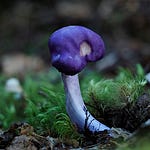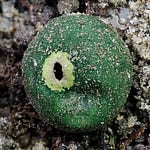I caught two buses from Seogwipo, and within less than an hour, I reached the Seogwipo Recreational Forest, a popular forest located at the southernmost point of Korea.
When I arrived, the ticket guy motioned for me to come over and pay the 1,000KRW ($0.75) entrance fee — a steal if you ask me.
A large map near the parking lot displayed a network of trails. However, the paths were longer than I anticipated, and despite my initial plans to complete a loop, I only managed to explore a fraction of the forest before having to double back.
Right from the get-go I was preoccupied, crouched over (my back still hurts), inspecting all sorts of cool growth spurred on by the recent rain.



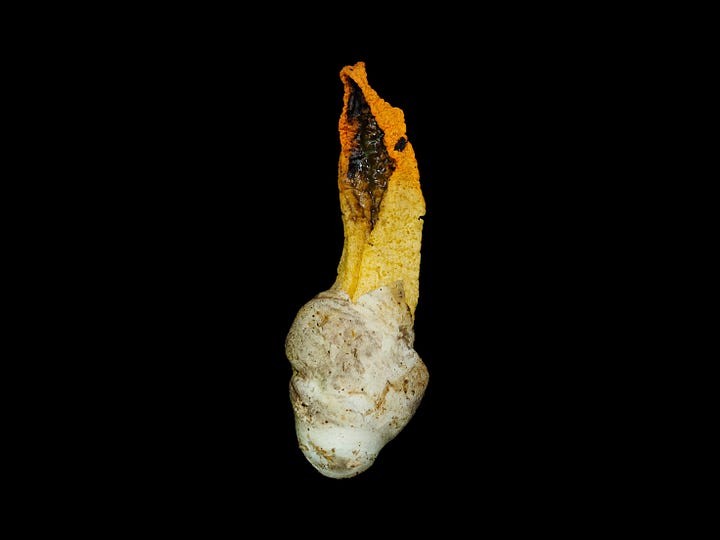

The highlight of the day was finding a few stinky squid mushrooms, one of which was still unhatched in its early egg form.
Pseudocolus fusiformis is a widely distributed genus also found in the US, Australia, Japan, Java, and the Philippines. It usually has three or four “arms” that are connected at the top.
These stinkhorns, or stinkcages, are particularly small compared to their counterparts. This one was only ~3.5 cm long.
I was able to pick one up to inspect, and the stench (from the gleba that attracts insects for spore dispersal) would stay — the fetid smell lingered so persistently that I felt self-conscious on my bus ride back.
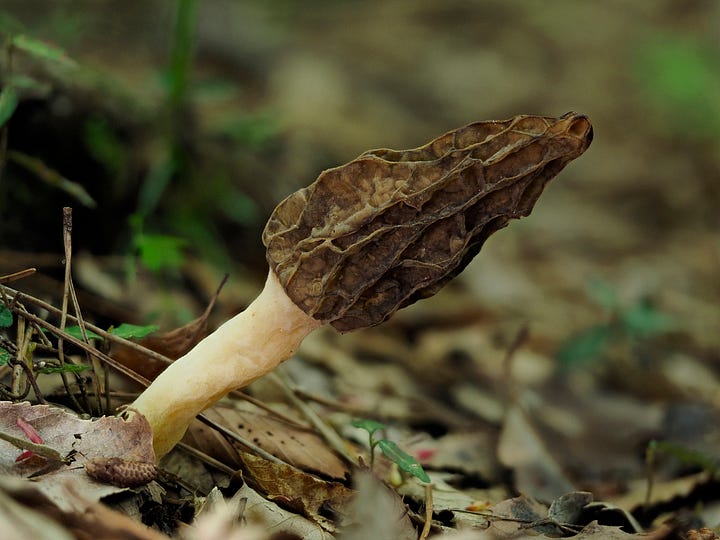
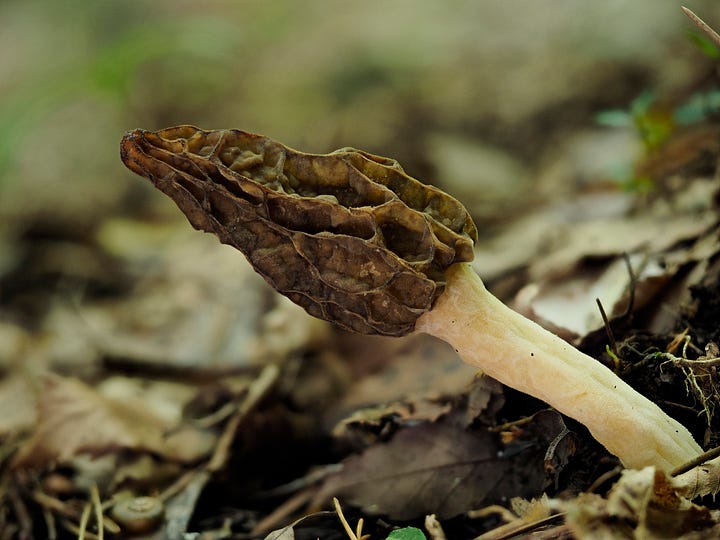
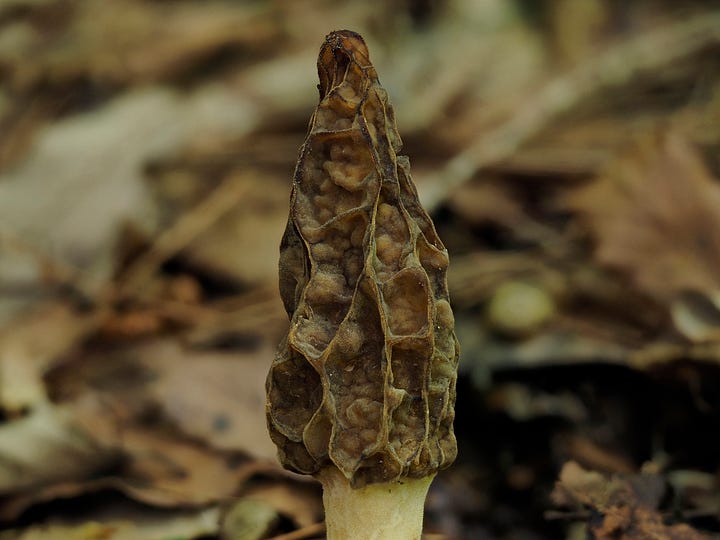

Camouflaged in with the undergrowth, I manage to spot a lone Morchella sp., a True Morel. Finally, after months of not being able to spot any in Japan, I found one.
Morels have a distinct honeycomb appearance with a network of ridges. They’re coveted in culinary circles but supposedly can be toxic if consumed raw or undercooked.
Unlike your typical Cookeina sp., or cup fungus, these miniature ones caught my eye on the way out. These tiny ones measured only about 1.5 cm.

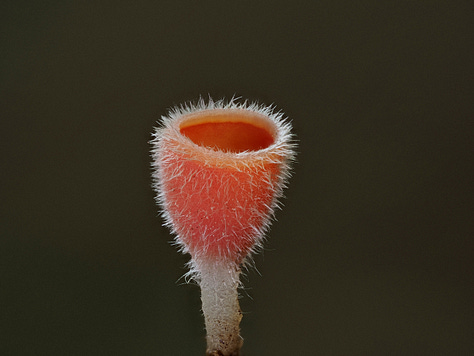
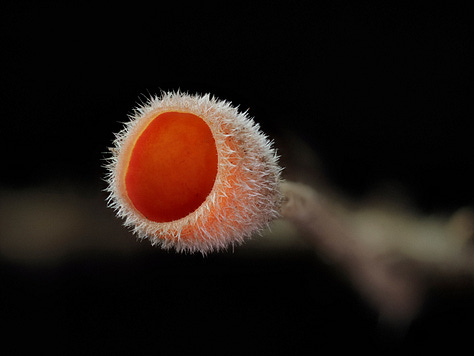
Microstoma sp. has an inverted bell-shaped fruiting body with tiny white hairs on the exterior. Lifting a twig on which they grew, I triggered a cloud of spores into the air.
Nearby, branches were covered in Artomyces pyxidatus, and I spent a good bit of time picking out the most photogenic ones.

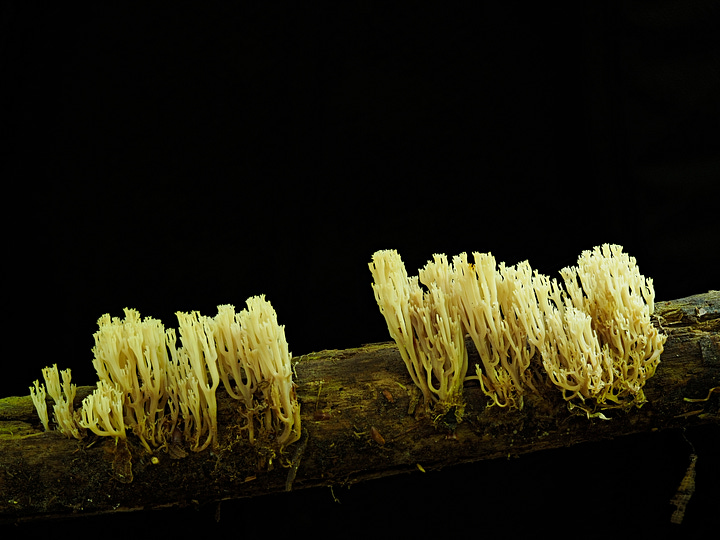
These Crown-tipped Coral fungi are edible (best served when fried with chopped potatoes) and have been known to be eaten by tribal groups of Northeastern India, although you’d need to collect a lot.
They’re nutritional and contain protein, potassium, and trace amounts of copper, magnesium, and calcium, as well as amino acids and antioxidant and antibacterial properties.
I later spot a tiny Mycena with a fuzzy stipe growing on a moss-covered log.





This was by far the largest and cleanest Auriscalpium sp. I’d encountered—remarkably free of debris (no food in the teeth).
Some more finds from the day:



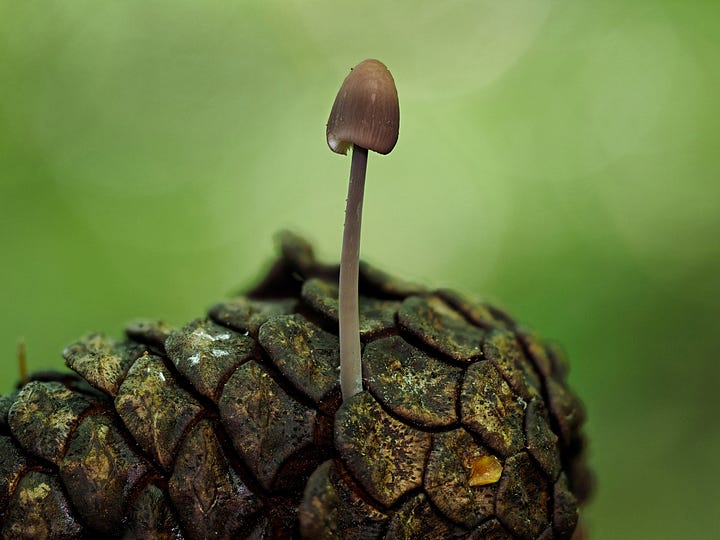
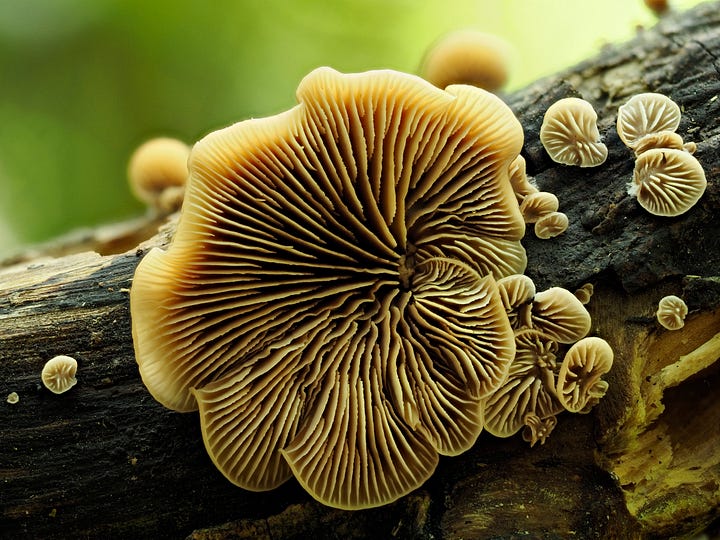

Though the rain started up again today, my mind is already planning another visit to the Seogwipo Recreational Forest. There's so much more to see, and each visit feels like uncovering something new, which I look forward to sharing with you.












